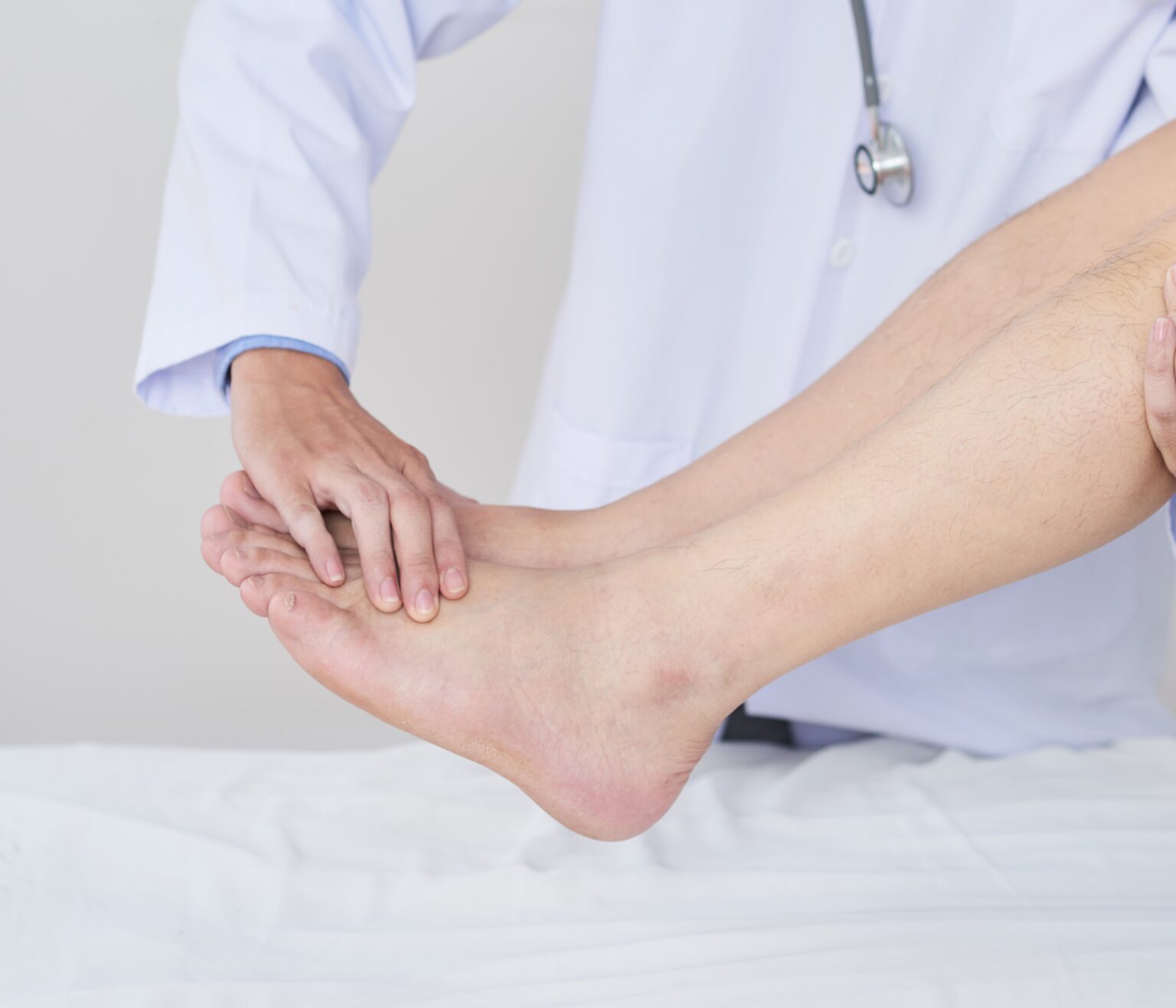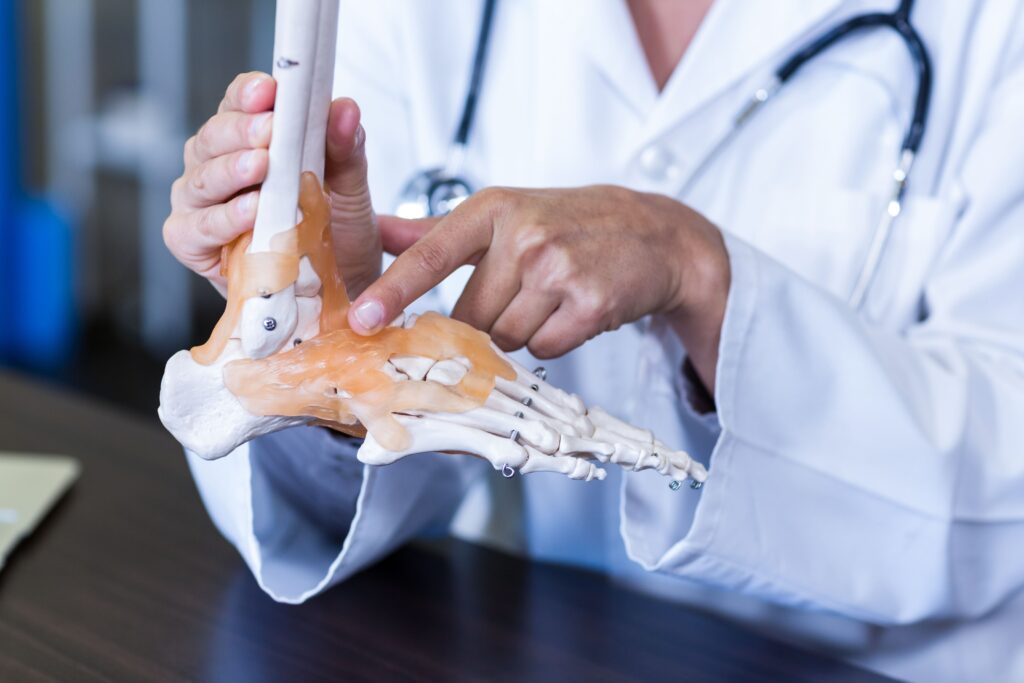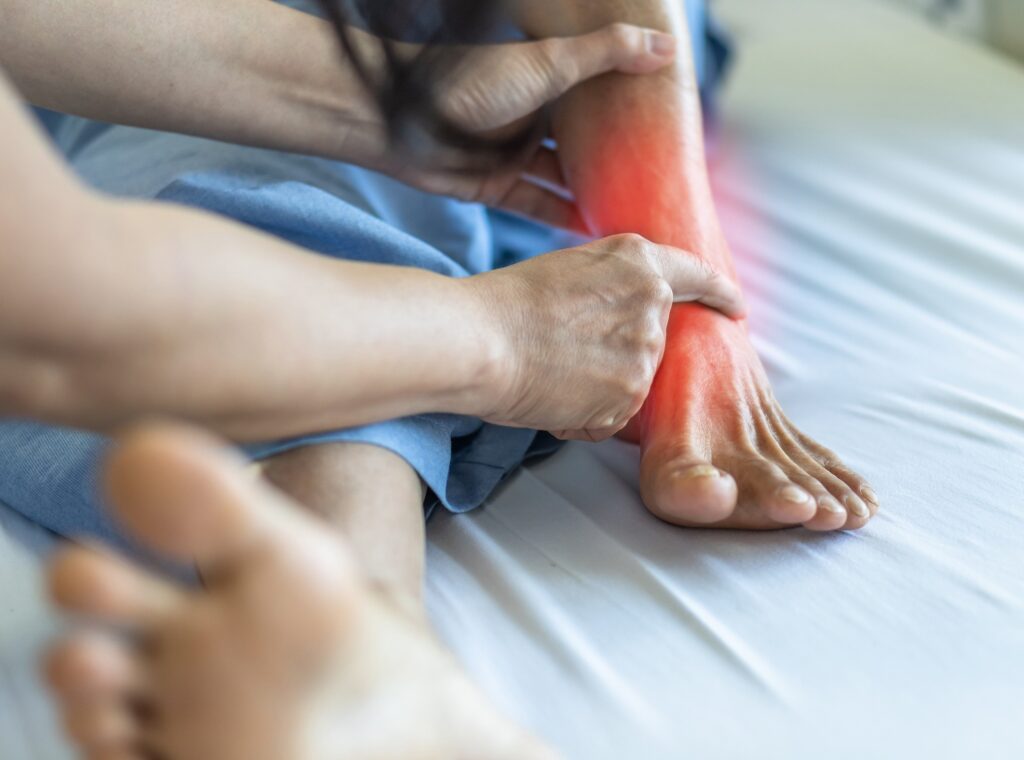SCHEDULE AN APPOINTMENT WITH US
Are Your Symptoms Affecting Your Quality Of Life?
Consult our MOH-accredited orthopaedic specialist for an accurate diagnosis & personalised treatment plan today.
Dr Kau is a Fellowship trained Orthopaedic Surgeon with more than 15 years of experience. He is experienced in trauma and fracture management, sports injuries, and joint replacement surgery. For patients suffering from foot and ankle conditions, Dr Kau offers conservative measures such as casting, walker boot or shoewear modifications, injections and as a last resort — surgical treatments including fixation and stabilisation. Make an appointment with Dr Kau for a consultation and a personalised foot and ankle treatment plan.

MBBS (S’PORE)
MRCS (Ireland)
MMed (Ortho)
FRCSEd (Ortho)

Foot and ankle specialists play a crucial role in diagnosing, treating, and managing various conditions affecting the foot, ankle, and lower leg regions. They work closely with patients of all ages, from addressing common foot problems in children and adults to managing complex injuries and chronic conditions in athletes and the elderly.
Foot and ankle specialists also play a pivotal role in preventive care, educating patients on maintaining foot health, avoiding injuries, and providing guidance on proper footwear.

The foot and ankle are vital parts of the human body, supporting our weight, enabling movement, and providing stability. Comprising numerous bones, joints, ligaments, and muscles, these structures allow us to walk, run, jump, and perform various activities.
For specialised foot and ankle care, Dr Kau offers a range of services to help diagnose, treat, and restore optimal function to your foot and ankle.
Foot and ankle specialists are adept at diagnosing and managing various conditions that can affect individuals of any age. These are some of the most prevalent conditions:
Accurate diagnosis is crucial in effectively managing and treating foot and ankle conditions. Here are some of the primary diagnostic techniques used:
Clinical Examination:
The initial step in diagnosing foot and ankle conditions involves a thorough clinical examination. Specialists assess the foot and ankle’s physical condition, including the skin, alignment, structure, and the presence of any deformities.
Radiography (X-rays):
X-rays are a fundamental imaging technique used to visualise the foot and ankle bones. They help in diagnosing fractures, dislocations, and signs of arthritis. X-rays can also reveal changes in the alignment of bones that may indicate the presence of conditions such as bunions.
Magnetic Resonance Imaging (MRI):
MRI scans provide detailed images of the foot and ankle’s soft tissues, including muscles, ligaments, and tendons. This imaging technique is useful in diagnosing soft tissue injuries, such as ligament tears, tendonitis, and muscle strains, as well as assessing the severity of such injuries.
Computed Tomography (CT) Scan:
CT scans offer cross-sectional images of the foot and ankle, providing more detailed information than standard X-rays. They are useful in evaluating complex fractures and in planning surgical procedures.
Ultrasound:
Ultrasound imaging is used to visualise soft tissue structures in real-time. It is beneficial in diagnosing conditions such as plantar fasciitis, Achilles tendinitis, and soft tissue masses.
Specialists often recommend non-surgical options as the first line of therapy for various conditions. These treatments aim to relieve pain, reduce inflammation, and improve mobility without the need for invasive procedures.
Physical therapy involves a range of exercises and techniques designed to strengthen the muscles around the foot and ankle, improve flexibility, and increase range of motion.
Custom orthotic devices, such as insoles or braces, can provide support and alleviate pain by correcting abnormal foot and ankle alignment.
Nonsteroidal anti-inflammatory drugs (NSAIDs) can help reduce pain and inflammation associated with various foot and ankle conditions. In some cases, corticosteroid injections may be used to provide more significant relief from inflammation.
Surgical interventions are considered when conservative treatments fail to provide relief or when the nature of the condition necessitates a more direct approach.

 >
>
SCHEDULE AN APPOINTMENT WITH US
Consult our MOH-accredited orthopaedic specialist for an accurate diagnosis & personalised treatment plan today.



MBBS (S’pore)
MRCS (Ireland)
MMed (Ortho)
FRCSEd (Ortho)
Dr Kau (许医生) is a Fellowship trained Orthopaedic Surgeon with a subspecialty interest in Hip and Knee surgery and has been in practice for more than 15 years.
He is experienced in trauma and fracture management, sports injuries, and joint replacement surgery.
During the initial consultation, Dr Kau will evaluate your medical history, assess your condition and advise you on the next course of action.
After consultation, Dr Kau will decide which tests are needed. Most conditions will benefit from an X-ray and MRI of the affected region to aid in your diagnosis.
After diagnosis, Dr Kau will recommend a personalised non-invasive or surgical treatment plan, depending on your condition.
For Singaporeans, Singapore Permanent Residents and Foreigners.
Please speak to our friendly clinic staff about using your insurance plans.

If you have any enquiry, please do get in touch. Leave us a message and we will get back to you shortly.
To relieve foot and ankle pain, rest the affected area, apply ice packs, elevate the foot, take over-the-counter pain medication, wear supportive footwear, do gentle exercises, and seek professional guidance if needed.
The ability to continue regular activities or exercise routines with foot and ankle pain depends on the specific condition. It is best to consult with an orthopaedic doctor for guidance on modifying activities, recommended exercises, and alternatives to minimise further discomfort or damage.
The recovery period after foot and ankle surgery varies but typically ranges from several weeks to several months. Complete recovery and return to normal activities may take several months or longer. Following post-operative instructions and participating in recommended rehabilitation are important for optimal recovery.
Yes, foot and ankle specialists are skilled in treating sports-related injuries, ranging from acute injuries like sprains and fractures to chronic conditions such as tendinitis and stress fractures.
Children should see a foot and ankle specialist for any concerns regarding foot or ankle pain, deformities, or abnormalities in walking patterns. Early intervention can address many paediatric foot conditions effectively.
Preventing foot and ankle injuries involves wearing appropriate footwear, maintaining a healthy weight and performing exercises to strengthen the feet and ankles. Additionally, warming up before physical activity and using the correct techniques can help reduce injury risk.